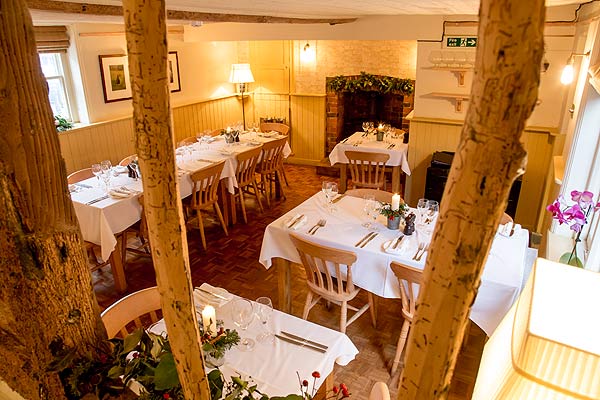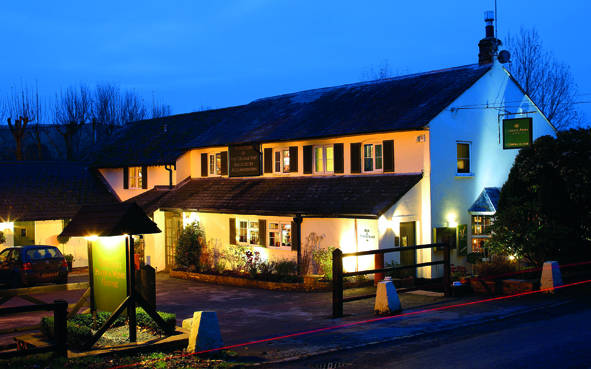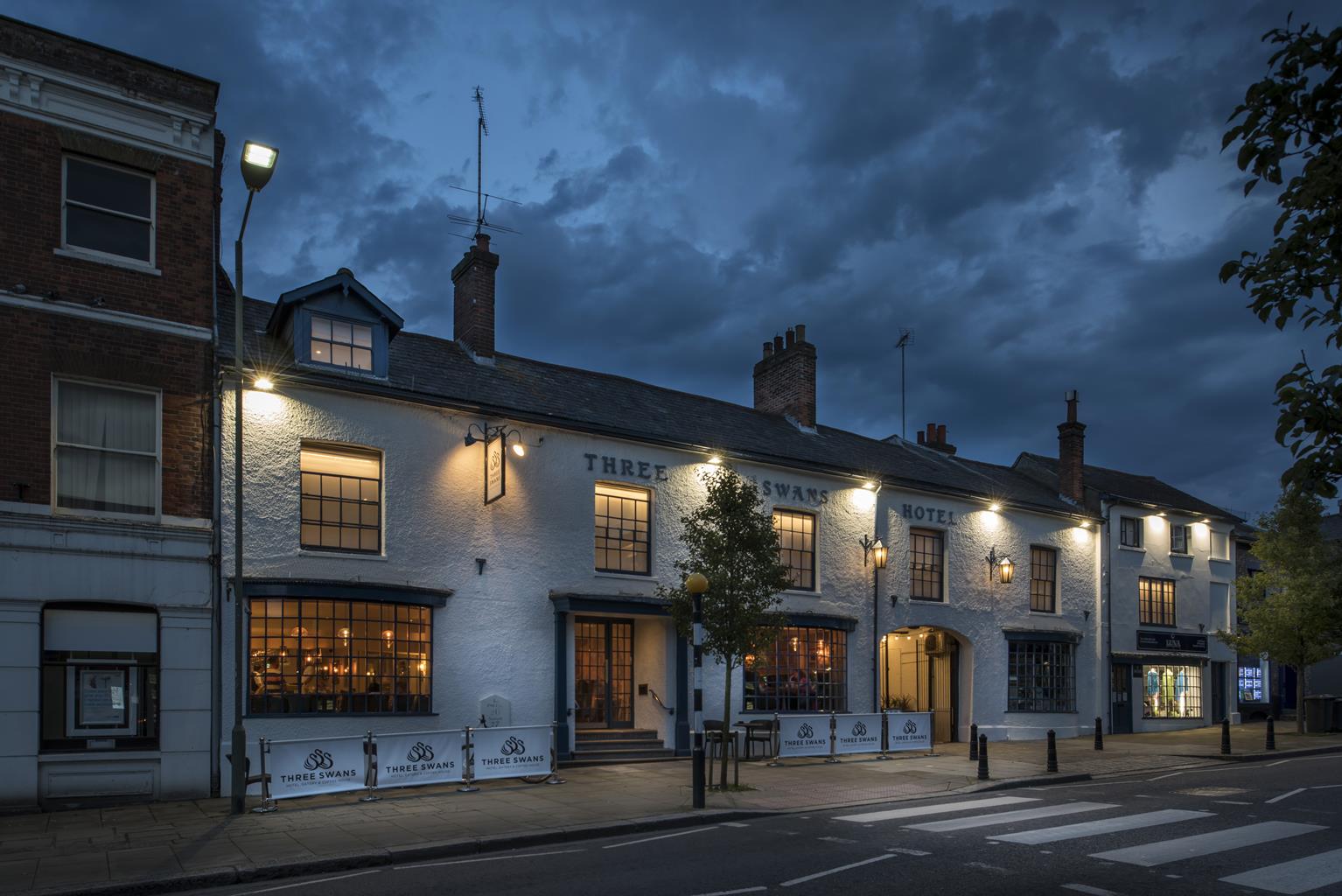Centrally located in the bustling market town of Hungerford, this charming former inn dates back…
Ramsbury

6.5 miles (10.4kms)
About the walk
The large old village of Ramsbury nestles on a wide stretch of the River Kennet close to the Berkshire border. Between AD 908 and 1058 Ramsbury was the centre of a flourishing diocese, complete with cathedral and bishop, before it was transferred to preferred Sherborne and later to Old Sarum. Although a mere parish for more than nine centuries, the village has an impressive church built on Anglo-Saxon foundations.
Mysteries of Littlecote House
With parts dating back to the 13th century, Littlecote is an exquisite manor house standing amid spacious lawns and gardens, with the River Kennet running through the surrounding parkland. Behind the building’s long, gabled Elizabethan facade are some fine architectural treasures, notably the 110ft (33.5m) Long Gallery, the oak-panelled Great Hall and the magnificent Cromwellian chapel, probably the only complete example of its kind in England.
Tales of mystery, intrigue and royal visits abound at Littlecote (now an adults-only hotel run by Warner Leisure). Jane Seymour is said to have entertained Henry VIII here before their marriage. Later, Charles II dined here with Colonel Alexander Popham. In 1688 William of Orange met with the commissioners of King James II at the house. Among the regular sightings of ghosts have been that of a mother and her baby, a midwife and that of Will Darrell who owned the estate in the mid-16th century. Known as ‘Wild’ Darrell for his unruly lifestyle, it is said that he had many mistresses, including his own sister whom he made pregnant. One night he called for Mother Barnes, a midwife, to deliver the child. She was brought blindfolded into a secret chamber off the Long Gallery, delivered the child and gave it to Darrell who immediately threw it on the fire. Although rewarded with gold, the midwife’s conscience troubled her and she finally told the local magistrate. The story goes that Darrell was brought to trial, accused of murder, before Judge Popham, but was acquitted after bribing Popham with the offer of Littlecote House. A year later Darrell was killed falling from his horse.
The Orpheus mosaic
William George, the steward of Littlecote Park, unearthed the remains of the Roman villa which lies to the west of the mansion, in the early 18th century. Edward Popham, the owner of Littlecote, allowed George to make detailed drawings of the magnificent mosaic floor before ordering it to be buried again to avoid publicity. George died shortly afterwards and it was thought that the mosaic had subsequently been destroyed until it was rediscovered by archaeologists in 1978. Excavations have continued over the 3-acre (1.2ha) site, but you will find the showpiece of the villa, the superb Orpheus mosaic, beautifully restored and relaid in its original position (under a sheltering roof). Dating from around AD 360, it plays an important role in our understanding of early Christian architecture.
Walk directions
From the church, walk east to the Square and The Bell pub. Bear right down Scholards Lane, signed to Hungerford. At the road junction turn right, signed ‘Froxfield’, and cross the River Kennet. Continue ahead up the road.
Just before a cottage, take the metalled track left, waymarked to Littlecote House. As the drive bears right, continue straight on along a track through the valley. In 0.5 miles (800m), pass a cottage called West Lodge, and continue ahead on the grassy path. Keep left along the field-edge, parallel with the river.
As the end of Littlecote House comes into view, hook back left down the metalled track to explore the foundations of the Roman villa and the remarkably preserved mosaic. Return to the junction of paths and turn left, walking past the front of the magnificent old mansion and straight on down the drive, with its avenue of trees, to reach a gatehouse and road.
Turn right, ascend the steep lane, then, where it turns sharp left, keep straight on through the hotel entrance gates, signed ‘Ramsbury’. As the metalled track swings right, go straight ahead along the gravelled track. Pass a collection of fancy chickens and go straight ahead through a field gate, following the track ahead.
At a junction of tracks, fork right along a concrete track, following the bridle path uphill. Keep right, and where the concrete track swings right into woodland near the top of the hill, take the path ahead just within the woodland fringe. The path soon veers right, descends into the valley and follows the left-hand edge of a field to reach the track by the cottage encountered on the outward route. Turn left to reach the road (Point 2). Cross straight over and walk ahead along the bridleway track.
Pass between two cottages and turn sharp right. Follow the footpath over two bridges, passing the weir. Keep ahead on the lane into Ramsbury, then turn right along the high street to return to the start point by the church.
Additional information
Field paths and established tracks
Farmland, woodland, parkland, village streets
Keep dogs under control at all times
OS Explorers 157 Marlborough & Savernake; 158 Newbury & Hungerford
Roadside parking near church in Ramsbury
In front of church in Ramsbury
WALKING IN SAFETY
Read our tips to look after yourself and the environment when following this walk.
Find out more
Also in the area
About the area
Discover Wiltshire
A land shrouded in mystery, myth and legend, Wiltshire evokes images of ancient stone circles, white chalk horses carved into hillsides, crop circles and the forbidden, empty landscape of Salisbury Plain. To many M4 and A303 drivers heading out of London through the clutter of the Thames Valley, Wiltshire is where the landscape opens out and rural England begins.
Wiltshire’s charm lies in the beauty of its countryside. The expansive chalk landscapes of the Marlborough and Pewsey downs and Cranborne Chase inspire a sense of space and freedom, offering miles of uninterrupted views deep into Dorset, Somerset and the Cotswolds. Wiltshire’s thriving market towns and picturesque villages provide worthwhile visits and welcome diversions. Stroll through quaint timbered and thatched villages in the southern Woodford and Avon valleys and explore the historic streets of the stone villages of Lacock, Castle Combe and Sherston. Walk around Salisbury and discover architectural styles from the 13th century to the present and take time to visit the city’s elegant cathedral and fascinating museums. And if all of that isn’t enough, the county is also richly endowed with manor houses, mansions and beautiful gardens.
Nearby stays
Restaurants and Pubs
Nearby experiences
Recommended things to do
Why choose Rated Trips?
Your trusted guide to rated places across the UK
The best coverage
Discover more than 15,000 professionally rated places to stay, eat and visit from across the UK and Ireland.
Quality assured
Choose a place to stay safe in the knowledge that it has been expertly assessed by trained assessors.
Plan your next trip
Search by location or the type of place you're visiting to find your next ideal holiday experience.
Travel inspiration
Read our articles, city guides and recommended things to do for inspiration. We're here to help you explore the UK.













